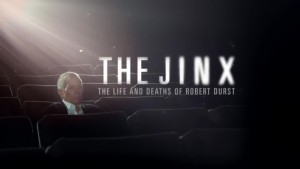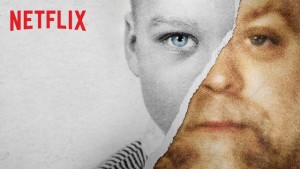by Nolan Doyle
Note: This is a continuation of a previous blog posted below. As promised, we’ll discuss three important narratives in modern true crime: Serial, The Jinx, and Making a Murderer. Also, a caveat, reading this will surely spoil the ending to these programs.
Serial
Its title a play on words, Serial is a serialized audio narrative. (We’ll discuss the first season, but its second season is currently airing, and you can find it here.) In the first season, show-runner Sarah Koenig re-examines the murder of Hae Min Lee, a case that “initially generated only local interest,” but garnered “international attention” when it became the subject of Serial. That international attention manifests itself in 68 million downloads and, among these millions of listeners, serious doubt about the guilty ruling against Adnan Syed. The publicity of the evidence and the podcast’s massive following combined to stir up an online movement to have Adnan Syed re-tried. As of this week, that movement saw some progress: a hearing for the re-trial was held in Baltimore.
The Jinx: The Life and Deaths of Robert Durst
Called The Jinx for short, the HBO documentary mini-series reconsiders the shady history of accused murderer, Robert Durst. Like Serial, the show investigates cold case files. Specifically, The Jinx examines the 1982 disappearance of then wife Kathie Durst, the 2000 execution-style killing of writer Susan Berman, and the 2001 death and dismemberment of Durst’s neighbor Morris Black. Unlike Serial, the show’s end produces more certainty than doubt. In a television moment stranger than fiction, Durst admits to all three murders on a “hot mic” off camera during the series finale. The show gained widespread notoriety when Durst was arrested on first-degree murder charges the day before its finale aired.
Making a Murderer
Another title that deals with wordplay, although slightly more suggestive in this case, the Netflix documentary miniseries Making a Murderer reconsiders the murder trial and subsequent conviction of Steven Avery. The show begins with discussion and footage of Avery’s criminal history, which includes 18 years of imprisonment for sexual assault for which he was exonerated in 2003. Following his release, Avery filed a civil lawsuit against Manitowoc County, Wisconsin to the order of $36 million. Soon after filing the lawsuit, he was accused of the murder of Teresa Halbach, a photographer last seen on the Avery property. With intense attention to detail, the show follows the investigation of Avery and nephew Brendan Dassey, the evidence upon which they were both convicted, their trials, and their subsequent sentencing. Without overtly supporting a re-trial, it does seem that the show somehow suggests it. It seems as if something in this case is not quite right and, again, the show’s viewers saw this as a potential avenue for change: 128,000 signed a petition to President Barack Obama seeking pardon. As a matter of fact, the case is not within the President’s jurisdiction as it is a state case. Like with Serial, it seems that there is some desire among the viewers of this program to affect change.
Reconsider Replay
Who Watches the Watchmen?
Although it is tempting to take these true crime narratives at face value, possibly even to join in on the Internet movements to see to it that justice is served, I think it’s important to bring a little bit of critical thought with you (it’s dangerous to go alone). Serial is a massive commercial success and has been immensely well received, critically speaking. That said, it is ethically problematic for some: “live investigation” allowed for the release of full names and addresses of people connected to the crime, and the show-runners use a real murder as a subject for entertainment. The Jinx is another critically acclaimed hit. That said, it has been accused of charting an uncomfortably close line between storytelling and journalism. Making a Murderer is another exceptional program in true crime television. It has been accused of being one-sided, emotionally manipulative, and of having omitted key evidence from the trial. Reporter Jonathan Mahler titled his New York Times piece “Two Maxims at Odds: Tell a Story, Tell the Truth.” His article was written with particular focus on The Jinx, but I think its message could be extrapolated upon all three, and possibly more broadly, the true crime genre. Though it’s tempting to act as an armchair umpire, in the case of true crime or instant replay, it may be important to consider that the filmmaker is dealing with two maxims at odds—the story and the truth.
Sources
Carr, David (November 24, 2014). “‘Serial,’ Podcasting’s First Breakout Hit, Sets Stage for More.” The New York Times.
“New hope for inmate from Serial podcast.” CBS News. February 9, 2015.
Bankoff, Caroline (March 15, 2015). “Robert Durst Arrested for Murder.” New York Magazine.
Hale, Mike (December 16, 2015). “Review: ‘Making a Murderer,’ True Crime on Netflix.” The New York Times.
Goldstein, Jessica (November 20, 2014). “The Complicated Ethics of Serial, the Most Popular Podcast of All Time.” ThinkProgress. Center for American Progress Action Fund.
Mahler, Jonathan (March 22, 2015). “Two Maxims at Odds: Tell a Story, Tell the Truth.” New York Times.
Dirr, Alison (January 19, 2016). “Seven Details left out of Making a Murderer.” USA Today.




